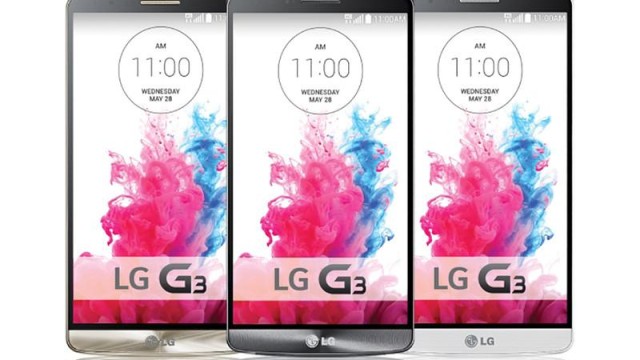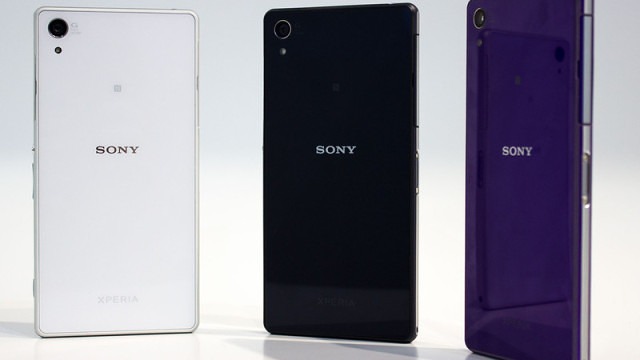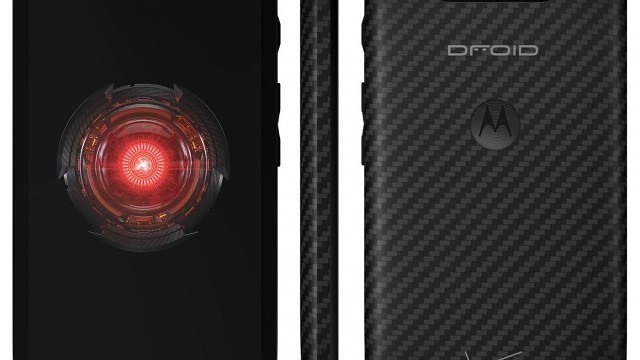Video: How to Unlock a Phone
So because I run a site called TheUNLOCKr, I get asked about unlocking devices quite a bit. I mean, it is in the name after all.
The thing is though that, judging by the types of questions, it seems that people are a bit confused on what unlocking your phone really means. Sometimes they confuse it with jailbreaking or rooting. Sometimes they mention taking a phone from one carrier to another even though those carriers don’t run on the same technology. And sometimes I’ll get the occasional, “Will this make all the apps in the app store free?” Really?
With that in mind, and since its generally the same for all devices, figured we should to a video on the general limitations of unlocking your phone, why you might want to unlock your phone in the first place, and, of course, how to unlock your phone.
What is Unlocking a Phone?
Unlocking, sometimes called SIM-Unlocking, is the term used for removing the carrier lock on a device so you can use it on other carriers. So say you have a phone locked to T-Mobile and want to use it on AT&T. If you get it unlocked, you can now do just that. That’s it.
This is opposed to rooting or jailbreaking a device, which both essentially mean the same thing (one is just android devices and one for iOS devices). That process allows you to add other software to a device that might normally not be allowed.
The next point of confusion we need to address (its not the free app thing, cause that’s just ridiculous) is the different networks that phones run on.
At the moment, there are three different types of networks that are the most popular around the world: GSM, CDMA, and LTE. Well get to the LTE part later cause its a little complicated frankly but, for now, let’s focus on GSM and CDMA.
The big difference between the two in regards to unlocking is how the network registers users.
CDMA requires the phones serial number or ESN to be called into the network and added to the system (and approved) manually. You might be familiar with this if you’ve ever bought a used Sprint or Verizon phone and had to call customer care or go into a store to get them to hook it up to your account.
GSM on the other hand, which is what is used by the vast majority of carriers in the world frankly, uses a SIM card that your information is just attached to. If you take it out and put it in another GSM phone it just automatically works, no need to call the carrier, waste time, nothing.
Ok so you looked in the back of your Verizon phone and aha! There is a SIM card, David you simply don’t know what you’re talking about!
So this is the bit where it gets a little complicated. You are actually correct, there is a SIM card in a lot of CDMA carrier devices nowadays But it’s their LTE SIM card. LTE is its own technology and it is based on GSM so it does use SIM cards, but most carriers around the world only use the LTE for data at the moment. This means that even if you unlocked the LTE slot on a CDMA device, it would only work for data, no calling/texting, etc. This is opposed to a GSM phone with LTE that uses the same SIM card for both technologies so unlocking a GSM phone gives you the ability to use the GSM and LTE.
At some point, however, LTE should, at least in theory, unify all the carriers around the world when they all start using it for voice and data since everyone will then have a SIM card slot, but until then its still a segmented world of CDMA and GSM.
There is an exception to this rule and that’s the case of world phones. Some phones from CDMA carriers also have GSM frequencies built in so that they can be used in other parts of the world (as mentioned before, the rest of the world doesn’t really use CDMA) such as the Droid Turbo that I did a video on not too long ago. Head to that video for more info on that.
Lastly, we need to talk about frequencies. I know it sounds extremely boring, but it’s sort of important.
Every device has specific frequencies that it can use and every carrier has specific frequencies they transmit. If the device doesn’t have the frequencies of the carrier you want to ultimately use it on, then even if it is unlocked it won’t work properly.


So before you unlock a phone, always check what frequencies the device is using for 2G, 3G, and LTE and the frequencies the new carrier you want to use it on is projecting in and make sure that the device can see the ones the carrier is projecting.
You can click the links below for some resources on sites that can show you all of those frequencies.
- GSMArena.com – Search this site to find the phone and what frequencies it transmits in.
- Our Internet Settings Repository – You can use our own internet settings repo by clicking on the country then the carrier you want to use the phone on and it’ll show the frequency there.
- WorldTimeZone.com – If you can’t find the carrier you need in the internet setting section above, then try this site which has a large list.
Why Would You Want to Unlock a Phone?
Ok, now that we covered what it is, you might be wondering why you would even want to do this in the first place.
The first big one, and probably the most obvious, is unlocking it so you can use it on a carrier you are switching to. You switch carriers (so long as they are both GSM) and bring your current phone with you instead of shelling out more money for a new one specific to the new network.
Another reason is so you can avoid international roaming charges. Let’s say you have AT&T and you want to travel to South Africa. AT&T is going to charge you a boatload of money if you use your phone over there, especially for data, but, if you get the phone unlocked, you can put in a prepaid SIM with data on it over there and it’ll end up saving you a ton of cash.


Finally, resale value. Generally speaking, paying to unlock your device will increase its resale value by more than the cost of the unlock since it allows more people to potentially buy it. No longer does the AT&T phone need to be sold to AT&T users, it can be sold to any GSM user.
Ok, so armed with all that knowledge, let’s finally get to the actually process of unlocking your phone.
How to SIM Unlock Your Phone
The easiest way, and the way we’ll be talking about, is IMEI unlock codes. Essentially you find the IMEI of your device, purchase an unlock code from an unlocking company that dips into a system to find the corresponding unlock code for that IMEI and emails it to you within a few days. You put it in and viola. Permanently unlocked.
Ready to get started? Here’s the step by step:
I. Find Your IMEI
Open up your phone’s settings and look for About Phone and find the IMEI listed there and write it down.
Android: Settings > About Phone > Software (or somewhere similar depending on the manufacturer)
iOS: Settings > General > About
II. Order an Unlock Code
Shameless self promotion and disclaimer, after being asked so many times for a way to unlock a device, I decided to start selling them here to make it easier for people and help us pay for hosting costs. You can click here to purchase an unlock code from us but if you don’t want to, you can Google for the name of your phone followed by unlock code and you’ll find suppliers. Just make sure to pick one that has a money back guarantee and seems professional, etc.
Again, you can buy a code from us here
1. Once you find the unlock code for your device, simply put in your IMEI and make your payment.
2. Wait for the unlock code to come back via email a few days later (can be as short as a few hours to as much as a week or so depending on the device).
III. Inputting the Unlock Code
Once you have the unlock code email, turn off the phone, take out the SIM card from your phone and put in an unauthorized SIM card (i.e. if it’s an AT&T phone, take out the AT&T SIM and put in a T-Mobile SIM), and turn it back on.
When prompted for an unlock code, input it very carefully and only once. All phones will completely lock you out from inputting the code ever again if you get too many failed attempts. So, again, input it once and very carefully. If it worked, you’re all set, if not, then contact the unlocking company for help before trying to input the code any more times.
If it doesn’t ask you for the code, open the phone app and dial #7465625*638*# then hit send and it should prompt you then.
IV. Setting Up the Internet and MMS Settings (Optional)
So most phones nowadays will automatically grab the internet and MMS settings for the new carrier (the information it needs to know where to access the internet and MMS). If you have internet access and can send a picture message, then you’re all set here. If you can’t do one or the other, then head to our Internet/MMS settings repository, pick your country, then carrier, then you can put in the settings in the corresponding fields by following the below instructions.
Here’s how to do it for Android –iOS does it automatically.
1. Pull down the notification shade.
2. Tap the gear icon at the top right to get to settings.
3. Tap More.
4. Tap Cellular Networks.
5. Tap Access Point Names.
6. Tap the plus sign at the top right
7. Enter something random for the name field and then enter in the rest of appropriate fields with the information you got from the Internet/MMS section.
8. Once all of that is in, tap the three dots at the top right then tap Save.
9. Tap the circle next to the new APN to turn it green and enable it.
10. Try to go to a website and send a MMS message and if it works, you’re all set.
After that, you are all set. Hope that helped some people clarify some of the confusion associated with unlocking a phone. Did I cover it all? Have any other questions? Leave them in the comments and I’ll try and help as best as I can. Otherwise, enjoy the new found carrier-agnostic freedom.







Could you “Root ” a Samsung Galaxy Note 4 for use as BlackBerry device interalia? Is there a Software you could install to simply do the “a Software you could install to simply do the “Magic”? My HEARTWARMING regards.